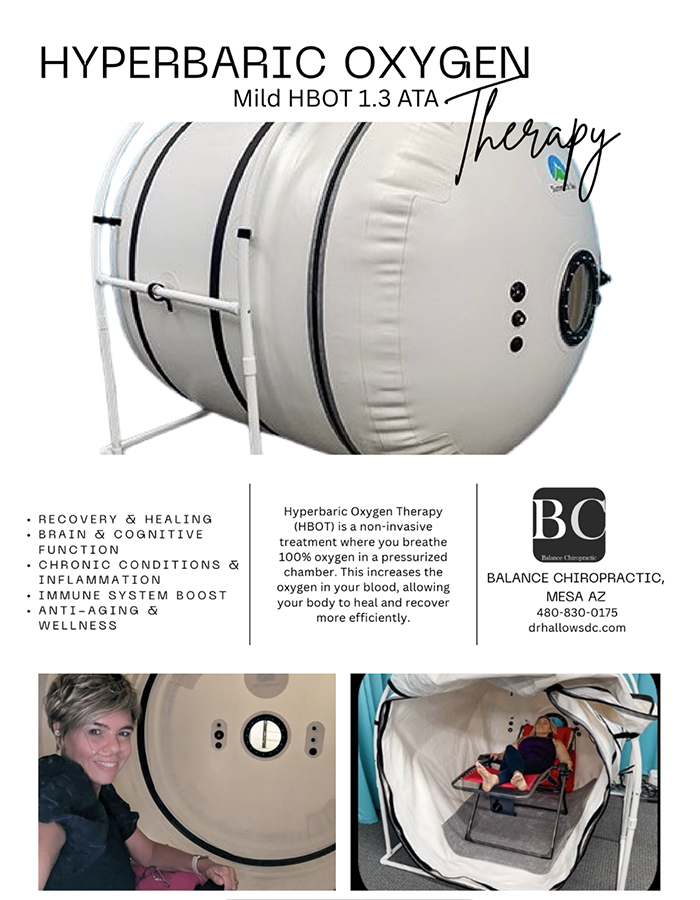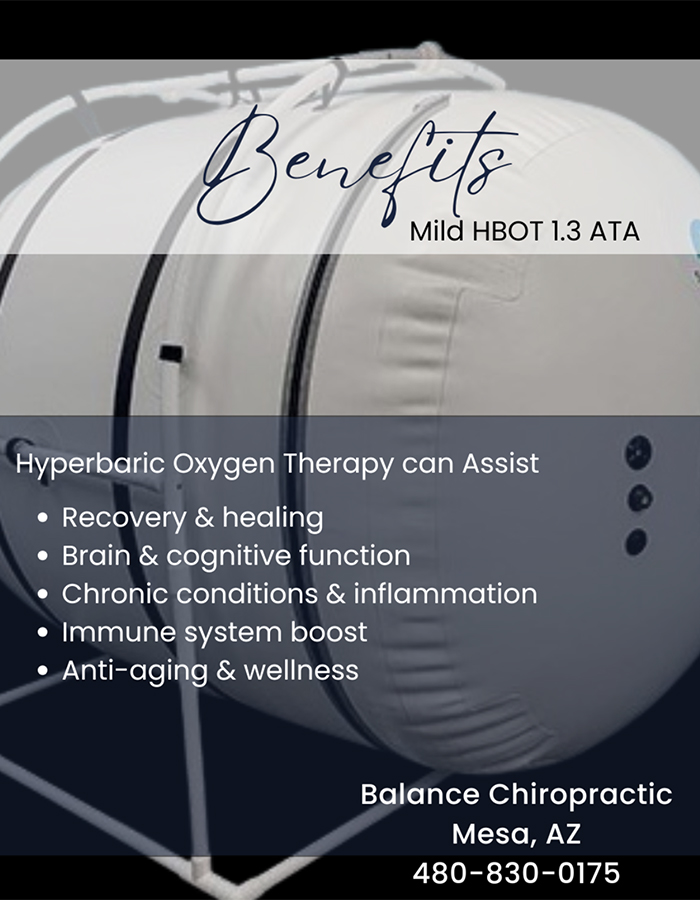
Mild Hyperbaric Oxygen Therapy
Hyperbaric Oxygen Therapy (HBOT) is widely regarded as one of the most effective and safest methods for saturating the body with life-sustaining oxygen. By increasing oxygen availability at the cellular level, HBOT supports the body’s natural healing mechanisms, stimulates the immune system, and helps reduce inflammation and pain. The FDA has approved HBOT for over a dozen medical conditions, and it continues to show promise in a growing number of off-label applications as well.
What Is Hyperbaric Oxygen Therapy (HBOT)?
Hyperbaric Oxygen Therapy (HBOT) has been shown to accelerate healing in the brain and throughout the body by enhancing blood flow and oxygen delivery to damaged or inflamed areas. HBOT involves breathing concentrated oxygen while the body is exposed to air pressure greater than normal atmospheric pressure (1.0 ATA, the pressure at sea level).
While traditional HBOT often uses high pressures (3.0-5.0 ATA), research over the past 20 years has shown that lower pressures (1.3-1.6 ATA) can offer similar benefits with significantly fewer risks or side effects. That’s why our clinic utilizes the *Summit to Sea Grand Dive Pro Plus* — one of the highest quality 1.3 ATA mild HBOT chambers available.
How Does It Work?
Inside the chamber, the patient comfortably breathes higher concentrations of oxygen as the pressure gradually increases. According to Henry’s Law (a law of physics), breathing oxygen under increased pressure allows the oxygen to dissolve into the plasma (the liquid portion of blood) — something that doesn’t happen significantly under normal conditions.
Ordinarily, oxygen is carried almost exclusively by hemoglobin inside red blood cells. However, under pressure, dissolved oxygen in plasma can reach areas of the body that red blood cells cannot easily access — such as swollen, inflamed, or poorly vascularized tissues. This results in higher concentration and deeper penetration of oxygen where the body needs it most.
Why Would You Need It?
The air we normally breathe contains about 21% oxygen. While this is sufficient for daily functions in most healthy individuals, elevating the oxygen concentration in the body sets off a powerful cascade of therapeutic effects — both immediate and long-term. These include:
- Enhanced energy production (ATP synthesis)
- Reduced inflammation
- Stimulated immune response
- Accelerated tissue repair
- Improved stem cell mobilization
- Neuroprotection and brain healing
Whether you’re recovering from an injury, managing a chronic condition, or seeking to enhance overall wellness, low-pressure HBOT offers a safe, non-invasive way to support the body’s natural healing processes.
Physiologic Benefits
degenerative processes.
Neovascularization (New Blood Vessel Growth)
What Conditions Will Benefit?
Hyperbaric oxygen therapy can treat a wide variety of illnesses, injuries, and other conditions. However, there are only 14 indications approved by the FDA. Although the others are not yet approved, there is extensive research citing HBOT’s ability to heal other indications.
FDA-Approved Conditions for HBOT
These “on-label” uses of Hyperbaric Oxygen Therapy are officially approved by the FDA based on proven clinical effectiveness:
- Air or Gas Embolism
- Carbon Monoxide Poisoning
- Central Retinal Artery Occlusion
- Chronic Refractory Osteomyelitis
- Crush Injuries & Acute Traumatic Ischemia
- Decompression Sickness
- Diabetic Lower Extremity Wounds
- Failed Skin Grafts & Flaps
- Gas Gangrene
- Necrotizing Soft Tissue Infections
- Radiation Tissue Damage (e.g., post-cancer treatment)
- Severe Anemia
- Sudden Sensorineural Hearing Loss
- Thermal Burns (Severe)
- Intracranial Abscess
Off-Label (Experimental or Investigational) Uses
These conditions lack FDA approval for HBOT but have shown promise in studies and patient reports. Use is considered “off-label” and may vary by provider:
- Anoxic Brain Injury
- Arthritis
- Cancer (as a supportive therapy)
- Cerebral Palsy
- Chronic Fatigue Syndrome
- Chronic Pain
- Complex Regional Pain Syndrome (CRPS)
- Concussion / Traumatic Brain Injury (TBI)
- Crohn’s Disease
- Fibromyalgia
- Inflammatory Bowel Disease (IBD)
- Interstitial Cystitis
- Lyme Disease
- Migraines / Chronic Headaches
- Multiple Sclerosis (MS)
- Spinal Cord Injury
- Sports Injuries
- Stroke Recovery
- Surgical Preparation & Post-Op Recovery
- Ulcerative Colitis

What to Expect During Hyperbaric Oxygen Therapy (HBOT)
Hyperbaric oxygen therapy is a safe, relaxing, and non-invasive treatment. All you need to do is sit back, relax, and breathe normally.
Initial Consultation
Before beginning treatment, you’ll meet with one of our doctors for a
personalized consultation. This includes:
- A medical evaluation to confirm you’re a good candidate for HBOT
- A review of any potential contraindications
- A tailored treatment protocol based on your health goals
You’ll also receive full orientation to help you feel comfortable and confident about the therapy process.
Treatment Process
On the day of your sessions, our trained staff will guide you through every step. During pressurization (or “descent”), you may feel a slight ear-popping sensation—like changes in altitude on an airplane. A team member will remain close throughout your treatment to answer questions and ensure your comfort.
Contact us today for pricing, packages, and appointments to get started.
How Many Treatments Will I Need?
The number of sessions depends on your condition, severity, and health goals. Below is a general guide to help you understand what to expect:
